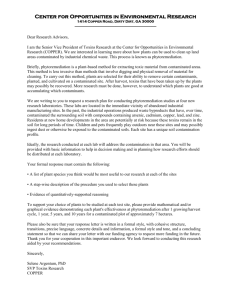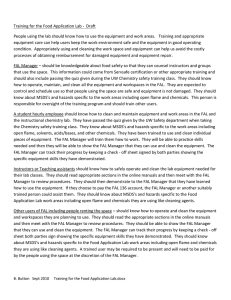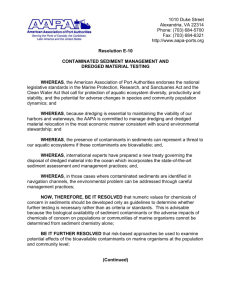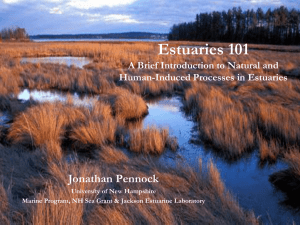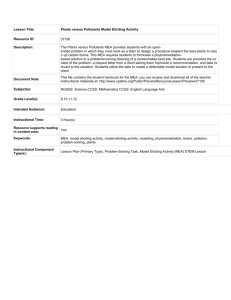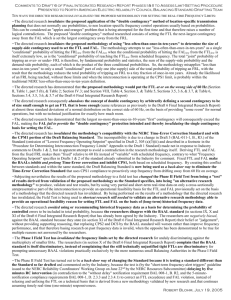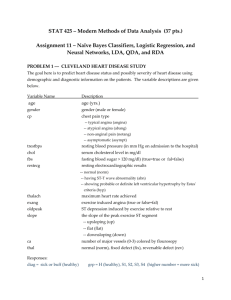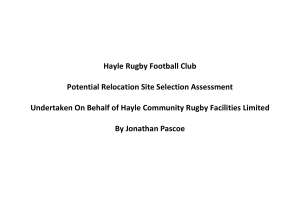Ecological impacts of metal pollution in the Fal and Hayle estuaries
advertisement
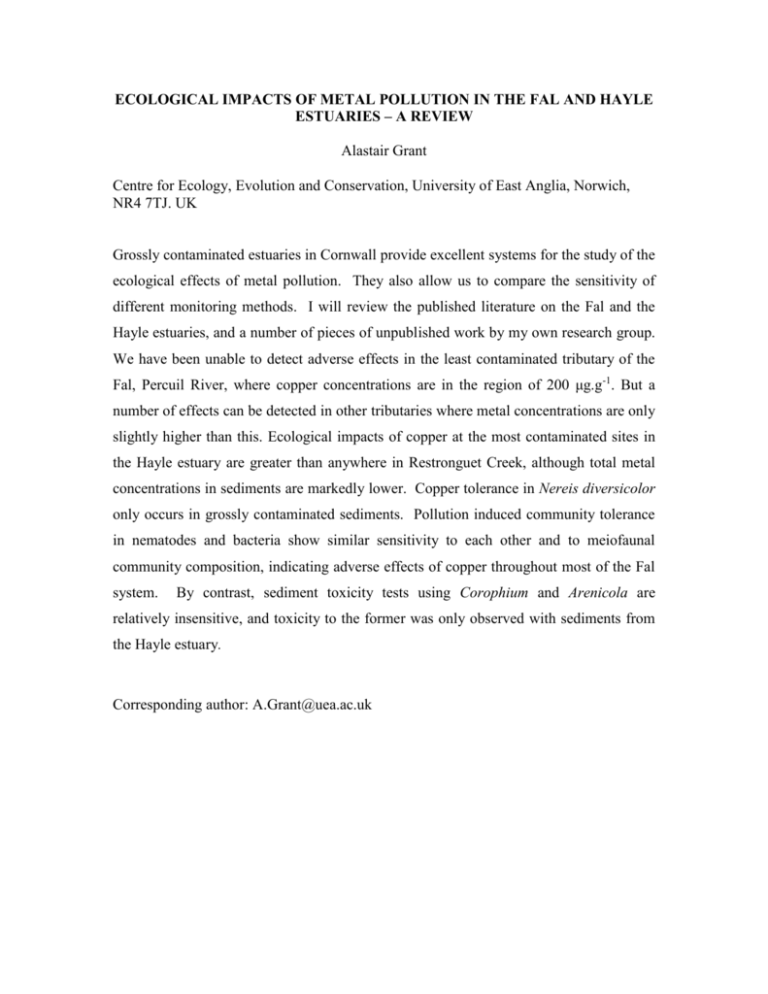
ECOLOGICAL IMPACTS OF METAL POLLUTION IN THE FAL AND HAYLE ESTUARIES – A REVIEW Alastair Grant Centre for Ecology, Evolution and Conservation, University of East Anglia, Norwich, NR4 7TJ. UK Grossly contaminated estuaries in Cornwall provide excellent systems for the study of the ecological effects of metal pollution. They also allow us to compare the sensitivity of different monitoring methods. I will review the published literature on the Fal and the Hayle estuaries, and a number of pieces of unpublished work by my own research group. We have been unable to detect adverse effects in the least contaminated tributary of the Fal, Percuil River, where copper concentrations are in the region of 200 μg.g-1. But a number of effects can be detected in other tributaries where metal concentrations are only slightly higher than this. Ecological impacts of copper at the most contaminated sites in the Hayle estuary are greater than anywhere in Restronguet Creek, although total metal concentrations in sediments are markedly lower. Copper tolerance in Nereis diversicolor only occurs in grossly contaminated sediments. Pollution induced community tolerance in nematodes and bacteria show similar sensitivity to each other and to meiofaunal community composition, indicating adverse effects of copper throughout most of the Fal system. By contrast, sediment toxicity tests using Corophium and Arenicola are relatively insensitive, and toxicity to the former was only observed with sediments from the Hayle estuary. Corresponding author: A.Grant@uea.ac.uk

